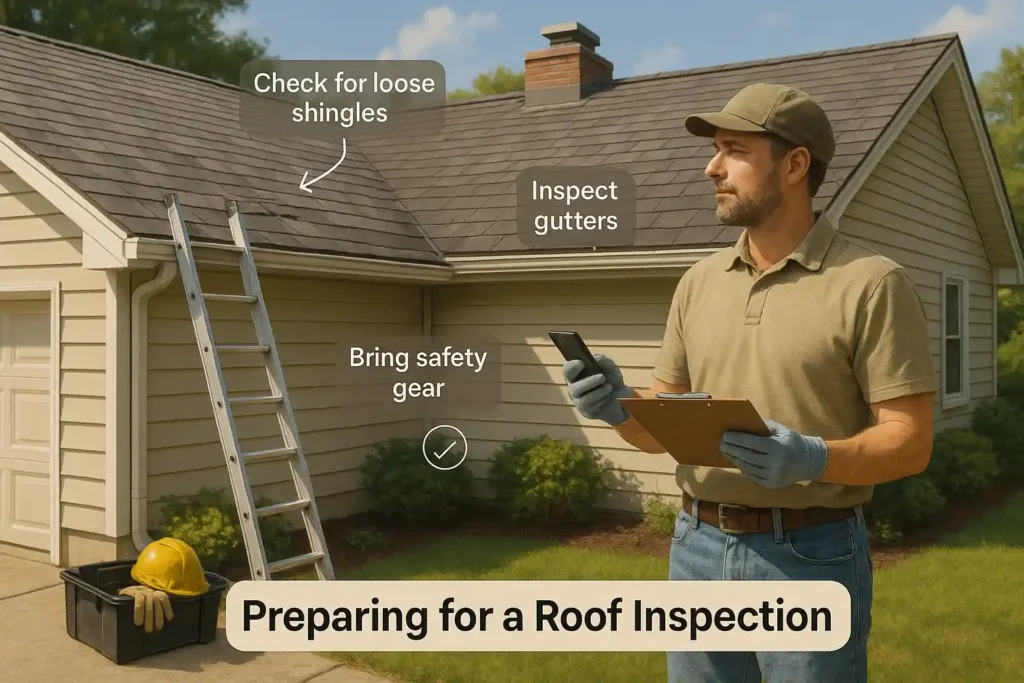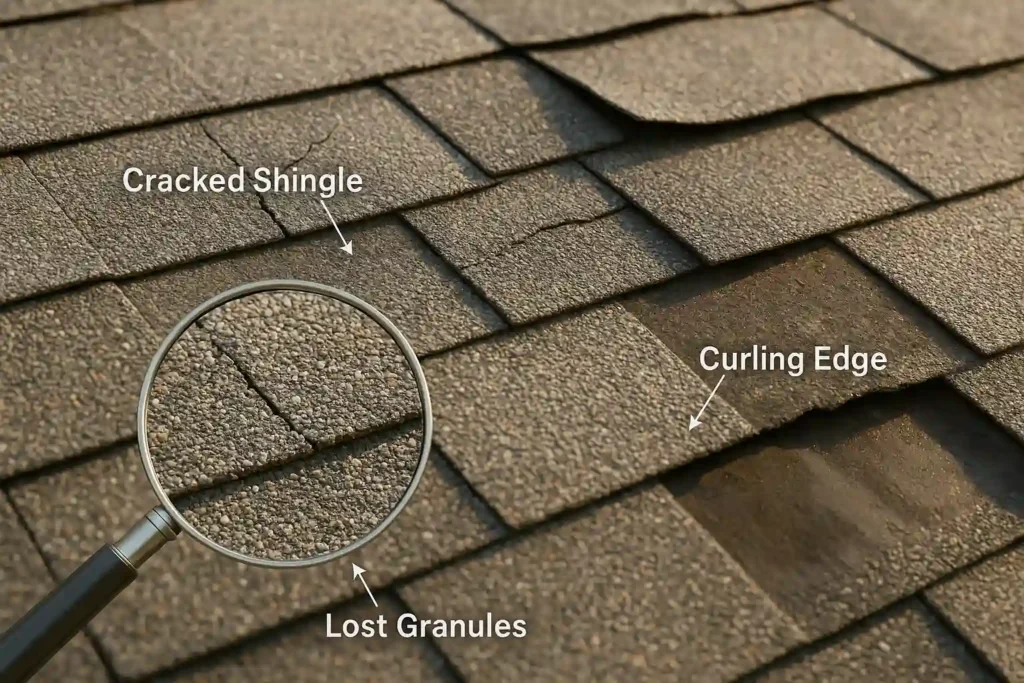Roof Condition Assessment Guide for Homeowners
Your roof silently protects your home every day—shielding your family, valuables, and comfort from Tennessee’s unpredictable weather. Over time, exposure to rain, hail, and heat can wear down even the toughest roofing system. That’s why performing a roof condition assessment is one of the smartest ways to protect your investment. It helps you spot issues early, make informed repair or replacement decisions, and avoid unexpected expenses later.
At Daniel Hood Roofing Systems, we’ve helped countless homeowners assess, repair, and extend the life of their roofs. This guide walks you through how to assess your roof’s condition, what to look for, and when to call a professional for help.
Why a Roof Condition Assessment Matters
Your roof is one of your home’s biggest investments. It faces constant exposure to sun, wind, rain, and debris—all of which can shorten its lifespan. A proper assessment helps you detect small problems before they turn into costly leaks or structural issues.
Key Benefits of a Roof Assessment
Prevents minor issues from becoming major repairs
Extends your roof’s lifespan through proactive maintenance
Helps you plan for roof replacement or upgrades
Supports smoother insurance claims after storms
Boosts your home’s resale value with documented condition reports
By understanding your roof’s health, you’ll be better prepared to handle maintenance and budgeting. For peace of mind, many homeowners choose a professional roof inspection at least once a year.
When to Perform a Roof Condition Assessment
Knowing when to inspect your roof can make a big difference in preventing damage. Weather, age, and even nearby trees can affect how often you need to check its condition.
Ideal Times for an Assessment
After major storms, hail, or high winds (tornado risks in Tennessee)
If your roof is 15–20 years old
When you notice leaks, stains, or sagging ceilings
As part of annual home maintenance
Before buying or selling a home
Routine seasonal checks also help identify problems like winter roofing issues such as ice dams or poor ventilation. Regular attention prevents expensive surprises later.
How to Prepare for the Assessment
Preparation ensures a safe and thorough inspection. Whether you’re doing a quick visual check or documenting for insurance, gather everything you need ahead of time.
Pre-Assessment Checklist
Review your roof’s history: age, material, and last repair date
Choose a clear, dry day for inspection
Wear slip-resistant shoes for safety
Get access to the attic for inside inspection
Keep contact details of a local roofing company ready
Taking photos and notes helps track your roof’s condition over time. If you find potential issues, schedule a roof repair estimate to determine next steps.

Step-by-Step: Conducting a Roof Condition Assessment
A careful inspection doesn’t require climbing on the roof immediately. Start from the ground, then move to areas that need closer attention.
Step 1: Exterior Inspection
Walk around your home and check for cracked or missing shingles
Look for sagging, dark streaks, or moss buildup
Inspect flashing near vents and chimneys for rust or lifting
Ground-level observations can reveal a lot. For complex materials like metal roofing or standing seam metal panels, it’s best to call professionals for a detailed review.
Step 2: Attic and Interior Check
Use a flashlight to inspect the underside of the roof deck
Look for water stains, daylight cracks, or mold
Check insulation for damp spots or deterioration
Poor attic ventilation can shorten your roof’s lifespan. For more guidance, see our roofing and siding repair guide to understand how interior issues connect to exterior damage.

Common Roof Issues Found During Assessments
Many homeowners discover issues that aren’t visible from the ground. Spotting these early can save hundreds in repair costs and prevent interior damage.
Typical Problems to Watch For
Shingle wear: curling, cracking, or missing granules
Flashing damage: rust, corrosion, or misaligned seams
Water intrusion: ceiling stains, mold, or musty odors
Storm impact: tree limbs, hail dents, or punctures
Ventilation issues: hot attic, sagging deck, or ice buildup
Each issue has a unique fix. For example, metal roof repairs often focus on sealing seams, while asphalt shingles might only need patchwork. Timely intervention is key to preventing further deterioration.
Understanding Roof Lifespan and Material Durability
A major factor in roof condition assessment is understanding how long your roof should last. Different materials perform differently under Tennessee’s changing climate, and maintenance plays a huge role in longevity.
Average Lifespan by Roofing Type
Asphalt Shingles (15–25 years): Affordable and reliable but may wear faster in extreme heat. Regular cleaning and upkeep help maximize lifespan.
Metal Roofing (40–70 years): Highly durable and energy-efficient. Standing seam metal roofing can last decades with minimal maintenance.
Modified Bitumen (20–30 years): Great for flat roofs. Routine inspection of seams and coating, as shown in our modified bitumen repair tips, prevents leaks.
Choosing the right material goes beyond appearance—it’s about long-term protection and value. Regular inspections help you monitor natural aging and plan ahead for repairs or replacements. For peace of mind, schedule a professional roof inspection to ensure your roof still performs as it should.
Interpreting Your Assessment: Repair or Replace?
After completing your inspection, review your notes and photos carefully. If issues are minor—like missing shingles or light flashing wear—simple repairs might be enough.
Things to Evaluate
Roof age and warranty coverage
Number and severity of damaged areas
Frequency of past repairs
Cost difference between short-term fixes and full replacement
If your roof has reached the end of its life or suffered repeated damage, replacing it may be more cost-effective. Check our roof warranty guide for details on coverage and workmanship guarantees.
When to Call a Professional Roofing Contractor
Some roofing situations require expertise, tools, and safety training. A professional can assess your roof thoroughly and recommend the best solution.
Call in the Pros When:
You see leaks, stains, or sagging areas
Storms or debris have caused visible damage
The roof is too steep or unsafe to climb
You need an inspection for insurance or resale
You suspect structural issues or aging materials
For emergency leaks or storm-related concerns, reach out for emergency roof repair. Our team responds quickly and provides honest recommendations—no unnecessary upsells.
Maintenance Tips After Your Assessment
Preventive care is the best way to protect your roof. Consistent maintenance keeps it efficient and extends its lifespan.
Ongoing Roof Maintenance Checklist
Clean gutters and remove leaves or debris each season
Trim overhanging branches and moss growth
Inspect ventilation and attic insulation regularly
Schedule annual professional checkups for older roofs
Use roof cleaning services to prevent black mold and streaks
Maintaining your roof saves money in the long run and prevents major issues like leaks or sagging decks. Keep a simple log of inspections, cleanings, and repairs—it’ll help track your roof’s condition year after year.
Conclusion: Take Charge of Your Roof’s Health
A well-executed roof condition assessment empowers you to make smart, cost-effective decisions for your home. By regularly checking your roof’s health, understanding its materials, and catching small issues early, you ensure your home stays protected through every season. Don’t wait until damage becomes visible—schedule your professional inspection today.
At Daniel Hood Roofing Systems, we provide detailed inspections, honest recommendations, and reliable solutions that fit your needs. Whether you’re looking for minor repairs, full replacement, or maintenance advice, our certified experts are here to help. Contact us today for a free roofing estimate and keep your home safe, dry, and worry-free for years to come.
